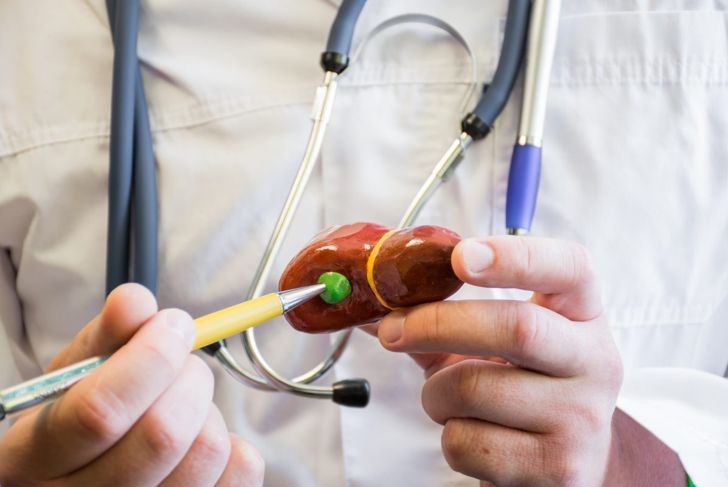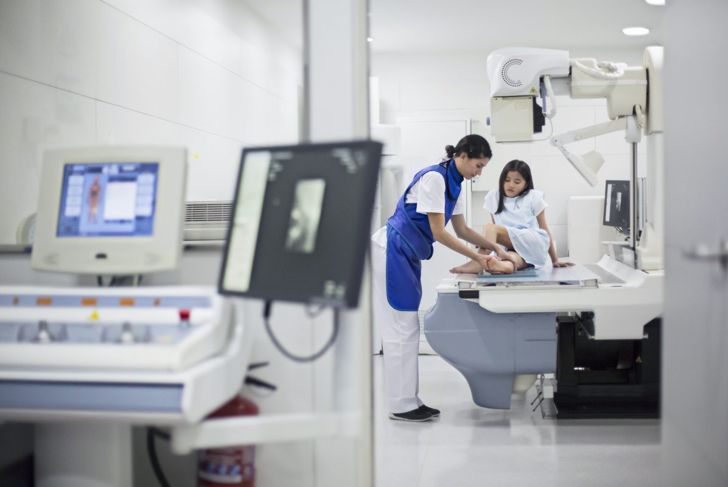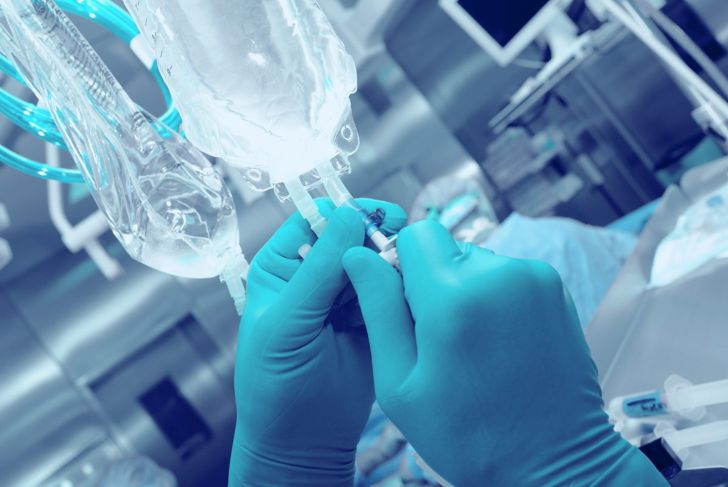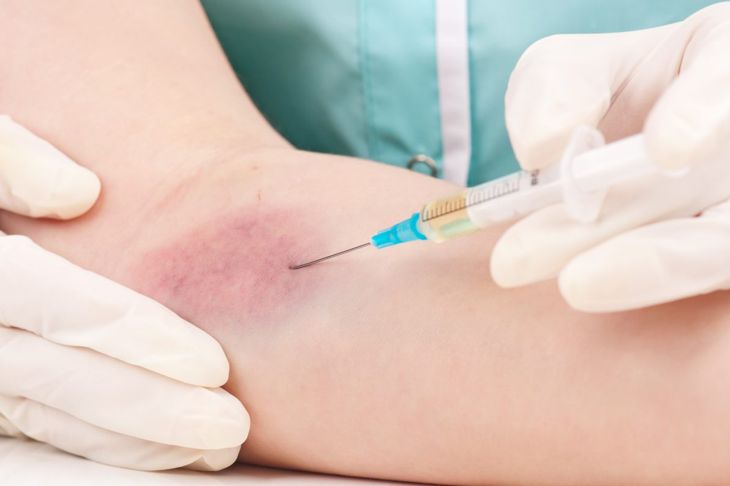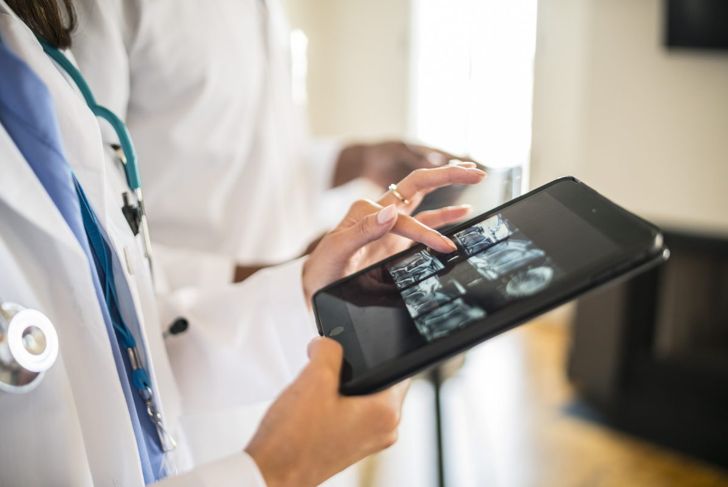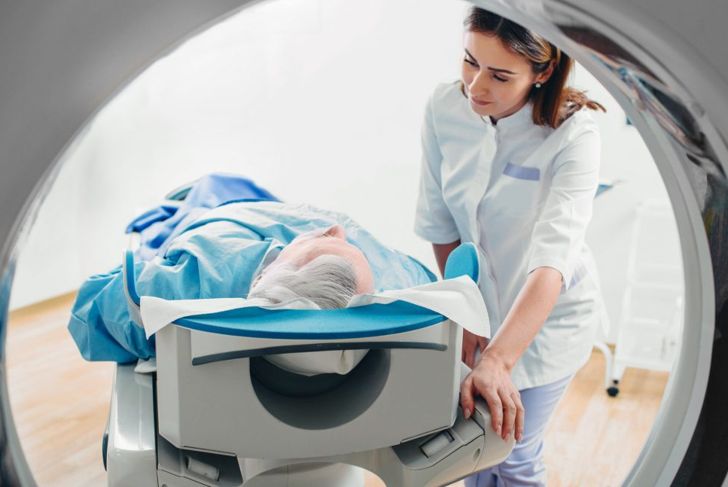A HIDA scan is a diagnostic test that captures images of the liver, gallbladder, and small intestine, as well as the bile ducts that connect them. Some professionals refer to a HIDA scan as cholescintigraphy or hepatobiliary scintigraphy. Doctors often use the test in conjunction with other medical imaging techniques — like X-rays and ultrasounds — to provide a complete visualization of a patient’s health.
Purpose
A HIDA scan usually evaluates the health of the gallbladder. In some instances, doctors may use the scans to look at the liver and track its bile-excreting functions and the bile’s flow. Conditions that HIDA scans can diagnose include bile duct obstructions, cholecystitis, and postoperative complications. These scans are also useful in assessing liver transplants.
How it Works
A member of a health care team will inject a radioactive tracer into an arm vein. A technician then positions a gamma camera over the abdomen to take photos of the tracer as it travels through the body. Radiologists observe the entire process on a nearby computer. The test takes around an hour, though additional imaging may be necessary in some cases.
Preparing for the Test
Doctors will often ask their patients to fast for at least four hours before a HIDA scan. Some individuals may be able to drink clear liquids during this time. Patients should let the radiologist know if they are pregnant and provide a list of medications they are taking. Individuals undergoing this procedure should let the staff know if they’ve had a recent barium X-ray or taken a medication containing bismuth, as these can interfere with the results. Medical staff will request that they remove any jewelry or metal accessories before the scan.
HIDA with CCK
A radiologist may order a HIDA scan with cholecystokinin (CCK) or a similar medication. This hormone stimulates the gallbladder, causing it to empty and release bile. This allows the scan to provide a clearer image of how well the organ is functioning. Some patients may also require a dose of morphine to make the gallbladder easier to visualize.
How it Feels
HIDA scans are painless, though there may be a slight sting as the doctor inserts the IV. Some people feel minor and fleeting pain in their stomach if the doctor uses a medication that stimulates the gallbladder. The tracer itself should cause no pain, though it can trigger an allergic reaction in rare circumstances.
After the Procedure
Most people can go about their day without any worries after the scan. Most of the tracer will leave the body through urine or stool within a day. Patients should make sure to wash their hands thoroughly after passing the tracer. Because the amount of radiation in the tracer is so small, it is not dangerous.
Risks
HIDA scans are incredibly safe and carry only a few risks. Minor bruising sometimes appears at the injection site, particularly in older people. Additionally, some people are allergic to the tracer and develop a reaction. There is a small amount of radiation exposure, though it poses no risk to most individuals.
Results
While observing the images, the radiologist will take note of anything out of the ordinary. For example, if the tracer moves slower than they expect through the body, it may be a sign of a blockage. The radiologist will then write a report detailing any issues and then transfer the report to the patient’s doctor, who generally receives the results in less than 24 hours.
Who Cannot Participate
Most people can participate in a HIDA scan, though there are a few exceptions. People who are pregnant or breastfeeding should immediately alert their doctor to their status before a HIDA scan. A slight chance exists that the radiation in the tracer could harm the baby. Additionally, individuals with a potential for an allergic reaction should avoid the scan.
Similar Scans
HIDA scans are only one type of cholescintigraphy. Similar tests use different radiotracers but are otherwise the same. The term “HIDA scan” comes from an early and incredibly popular radiotracer: hepatobiliary iminodiacetic acid. Though this specific tracer is rarer now, “HIDA scan” has largely become a catch-all term for all forms of cholescintigraphy.

 Home
Home Health
Health Diet & Nutrition
Diet & Nutrition Living Well
Living Well More
More